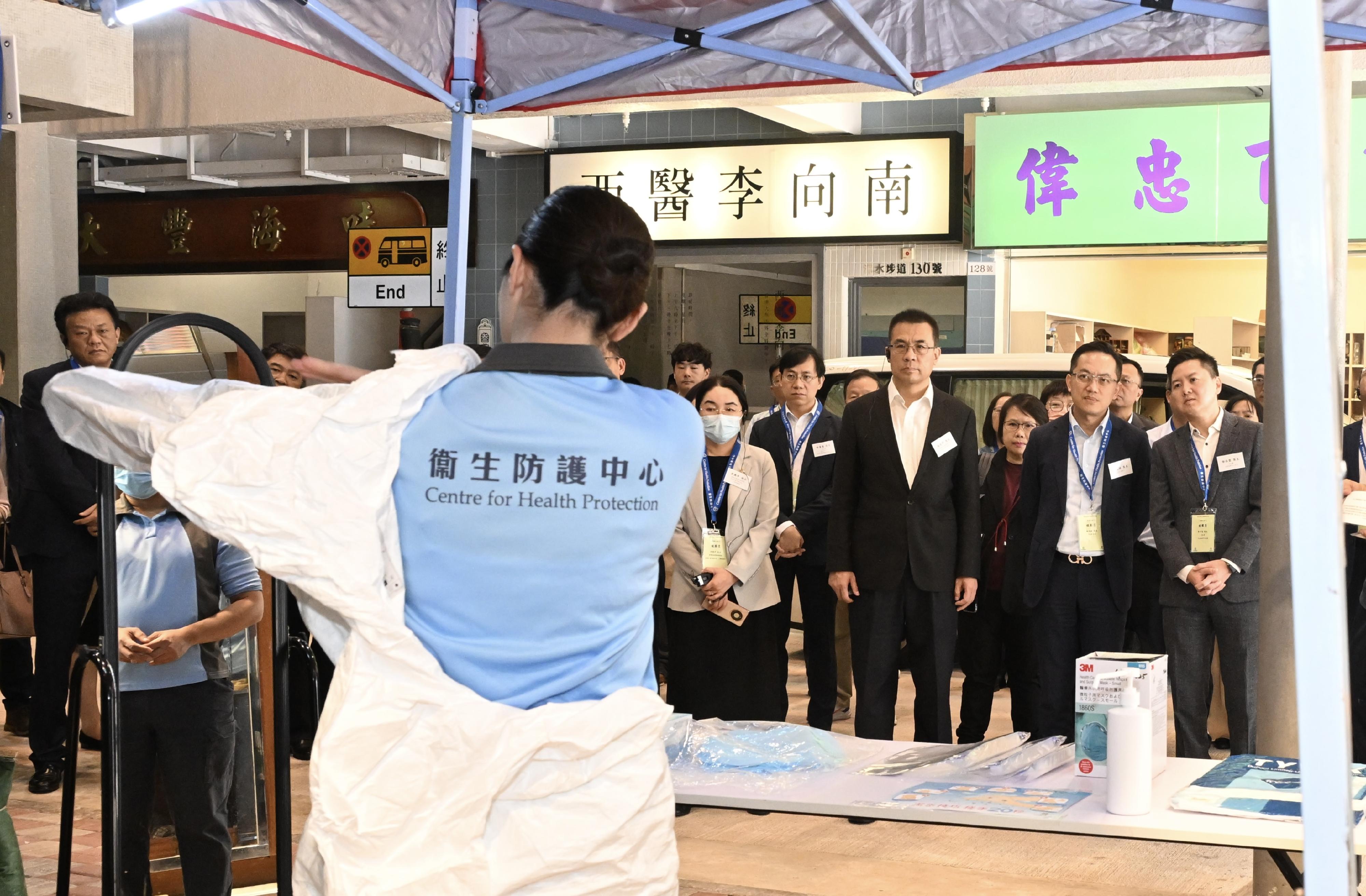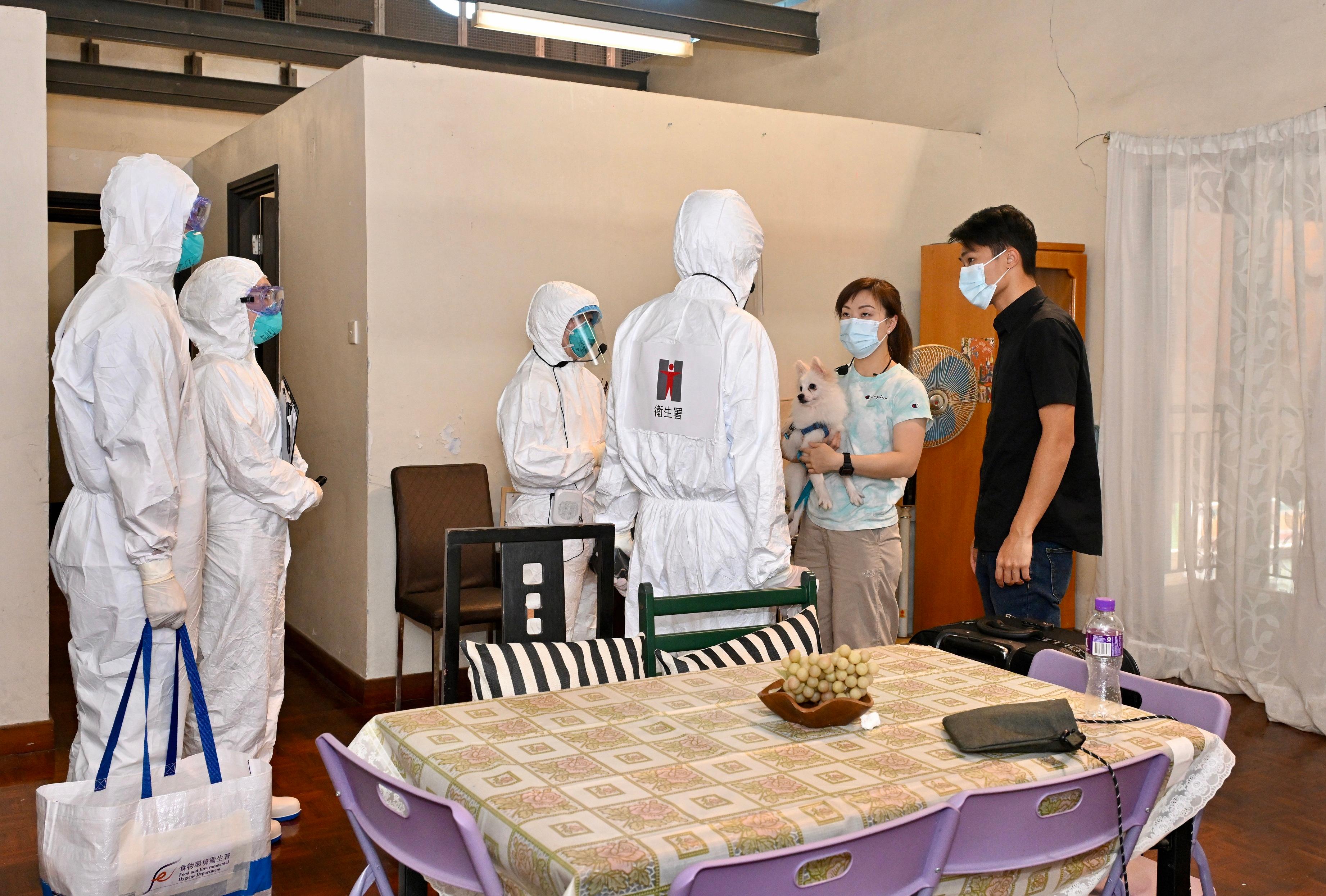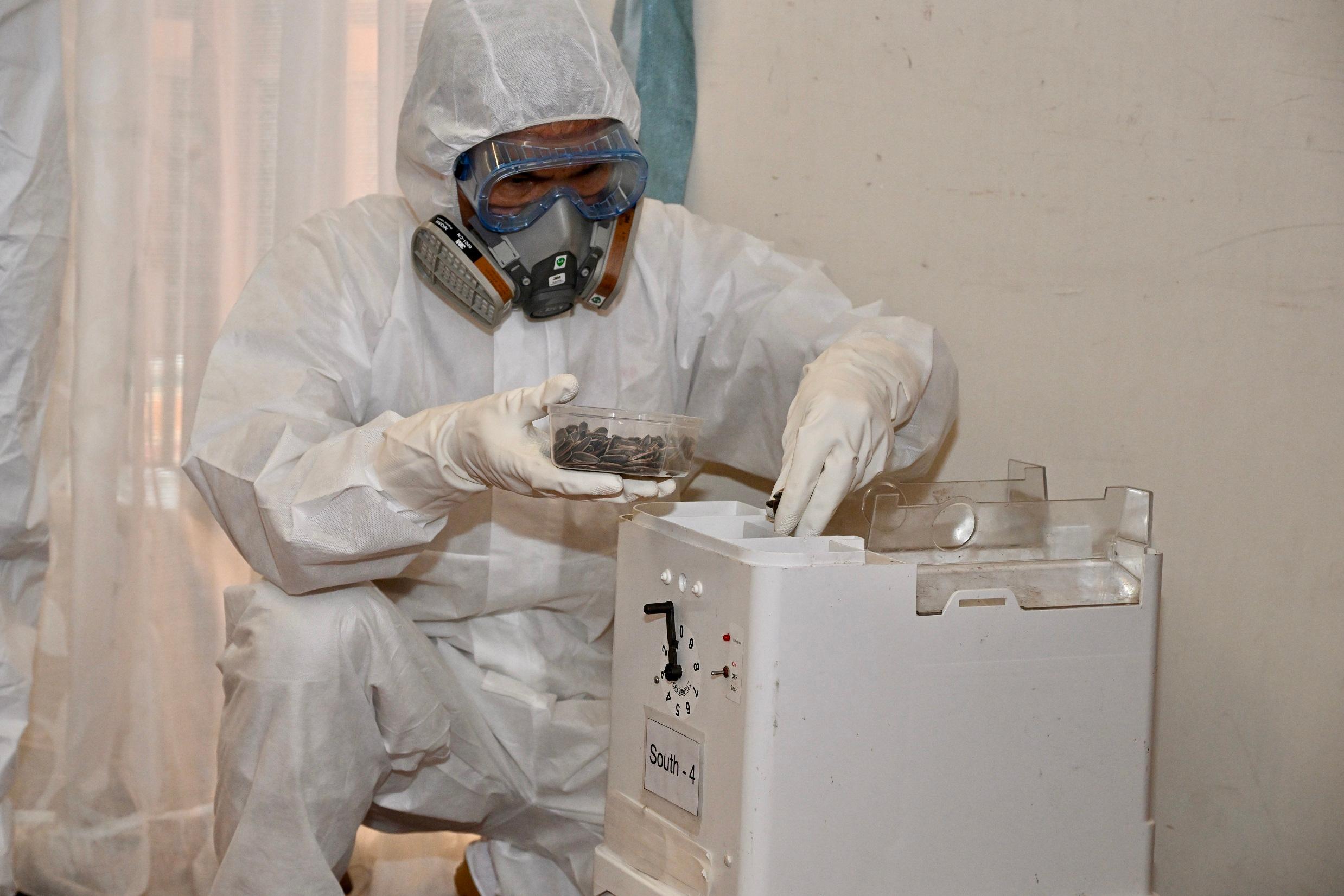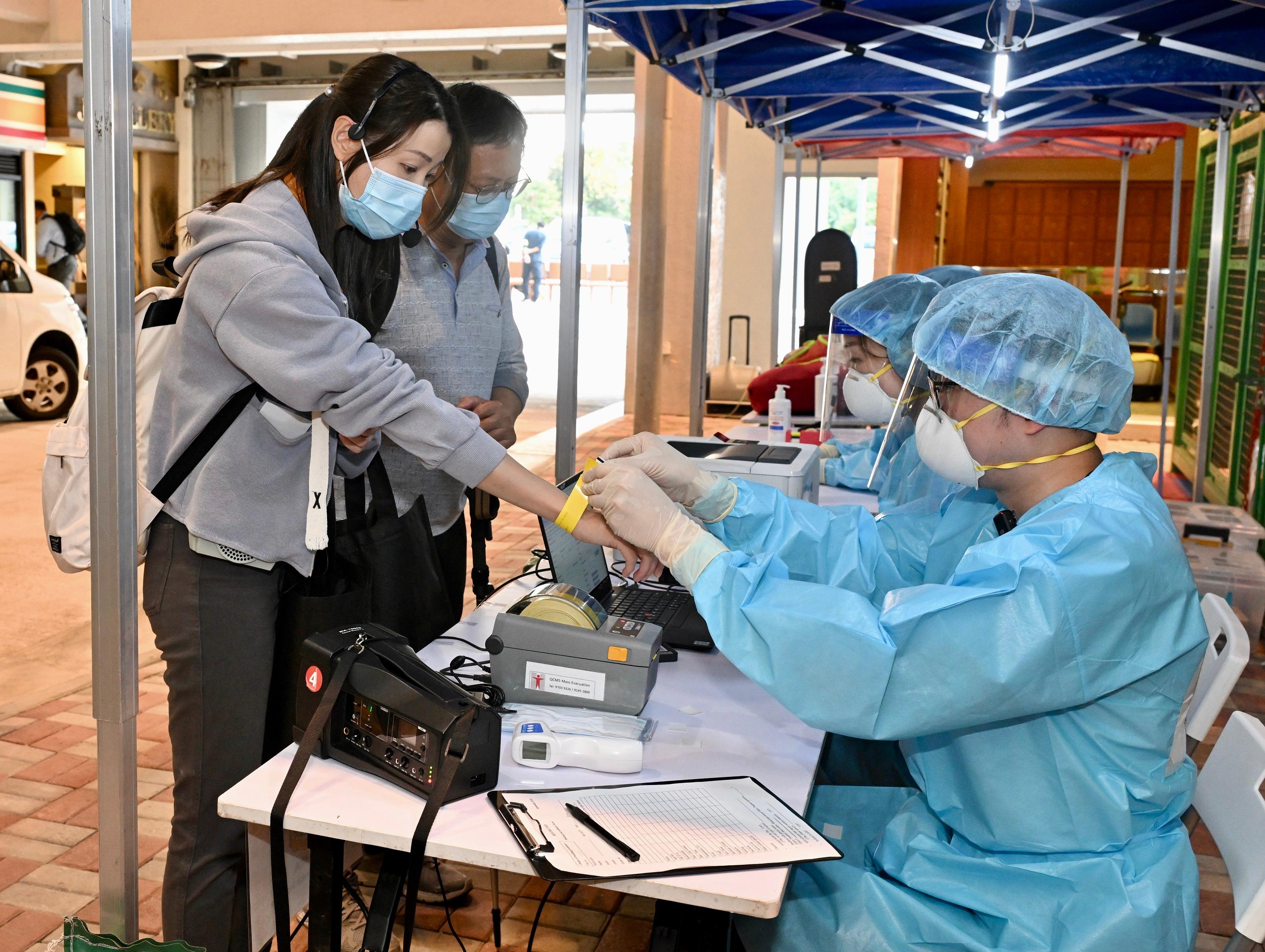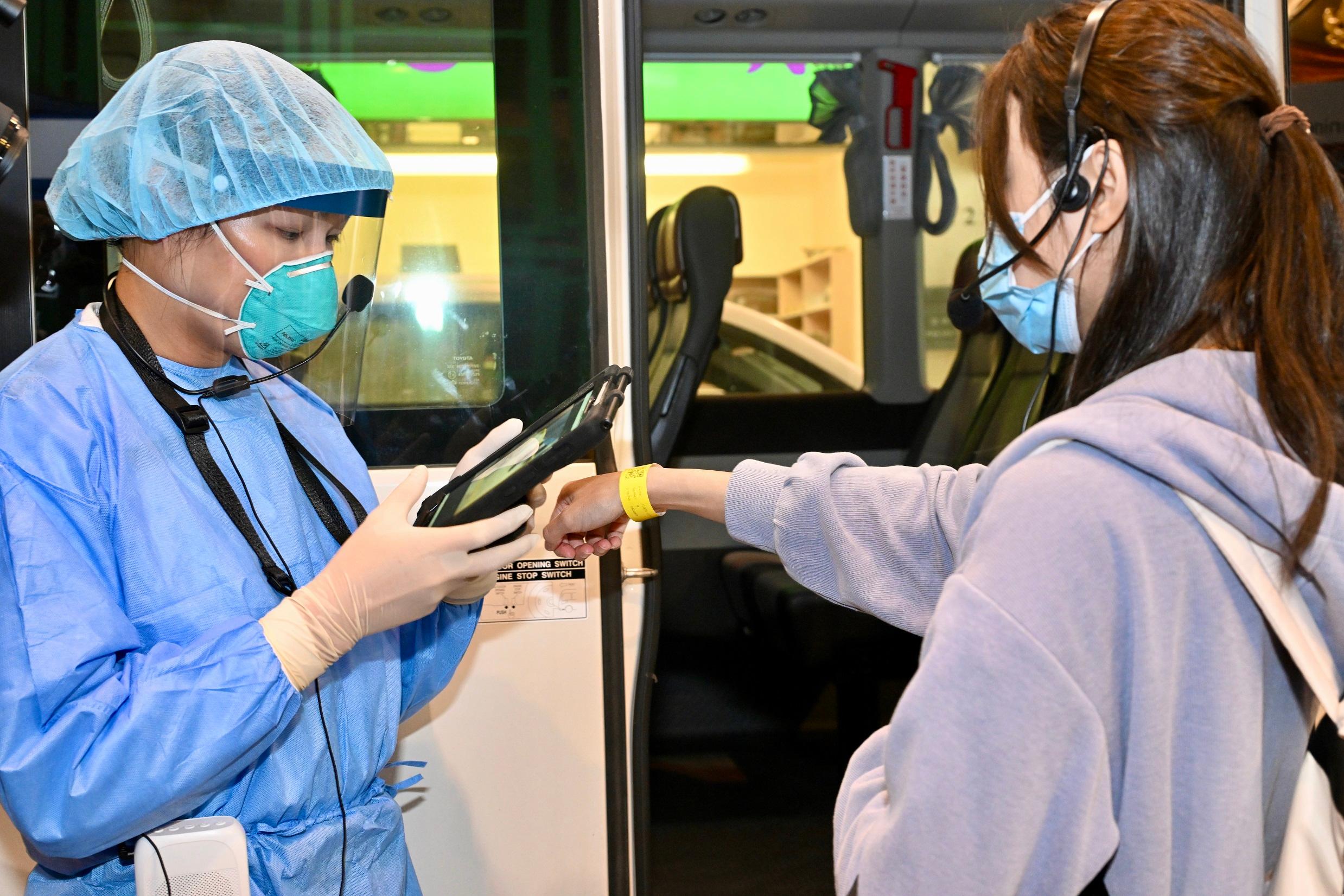Exercise "Prehnite" tests Government's response against plague (with photos/video)
******************************************************************************************
The exercise consisted of two parts. The first part was a table-top exercise conducted on November 20, in which nine relevant departments and the Hospital Authority (HA) discussed and co-ordinated the response measures required in a simulated scenario when transmission of plague occurred in a residential building.
The second part, conducted today, was a ground movement exercise. Under the exercise simulation, the CHP was notified by the HA of a case of plague, and immediately commenced epidemiological investigations. An initial investigation revealed that the patient had visited a place with outbreak of plague during the incubation period. After returning to Hong Kong, the patient resided in a residential building with family members. The patient had been to different areas of the building and had multiple chats with neighbours after the onset of symptoms. The CHP co-ordinated with relevant government departments to conduct a site visit at the concerned building, trace contacts of the index case, and carry out evacuation and quarantine operations. They also surveyed the building and its vicinity for rodent and flea infestations and implemented measures for the prevention and control of rodents and fleas. About 70 participants from relevant government departments took part in the ground movement exercise, with 30 experts from the Mainland and Macao health authorities attending as observers.
Plague is a communicable disease that affects animals and humans, and is caused by the bacteria Yersinia pestis. There are three main forms of plague infection: bubonic, pneumonic and septicaemic. Since the 1990s, most human cases have occurred in Africa. Plague is transmitted from an infected animal (mainly rodents) to humans through the bite of its fleas. Plague can also be contracted when cuts or other breaks in the skin come into contact with the body fluids or tissue of infected animals. Consumption of infected animal tissue and inhalation of infected respiratory droplets are also possible modes of transmission. Plague in a human is a serious disease with a case-fatality ratio of 30 per cent to 60 per cent for the bubonic type, and is usually fatal for the pneumonic and septicaemic types when left untreated. According to the World Health Organization, 2 886 cases were reported in 11 countries worldwide during 2013 to 2018, including 504 deaths. Of those, over 90 per cent of cases were from sub-Saharan Africa.
"Plague once erupted in Hong Kong in May 1894, causing at least 5 000 cases. In the 36 years from 1894 to 1929, over 20 000 cases were reported in Hong Kong, with a mortality rate of around 90 per cent. Hong Kong has encountered no plague cases since the last two cases recorded in 1929. However, as rats (and rat fleas) are present in Hong Kong, there is high volume of traffic (both human and goods) from all over the world, and the disease is found in areas outside Hong Kong, we shall stay vigilant and get prepared for the disease," a spokesman for the DH added.
"This exercise provided a valuable opportunity for relevant government departments and the HA to test the response capabilities of stakeholders in the handling of plague. The DH has held 28 similar exercises in the past, simulating the situation with cases such as novel influenza, Middle East Respiratory Syndrome and Ebola virus disease. We hope that these exercises will enhance the community and health-care personnel’s awareness of possible epidemics and keep them alert and prepared," the spokesman said.
Ends/Monday, November 27, 2023
Issued at HKT 20:39
Issued at HKT 20:39
NNNN





